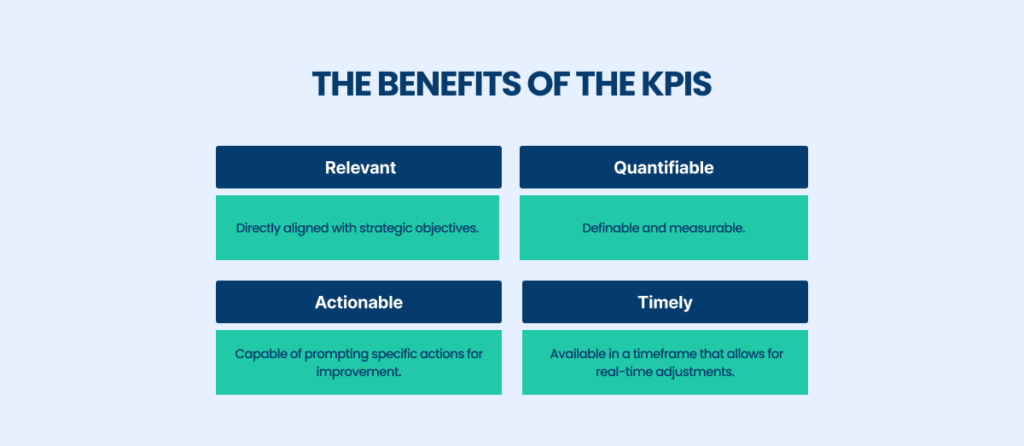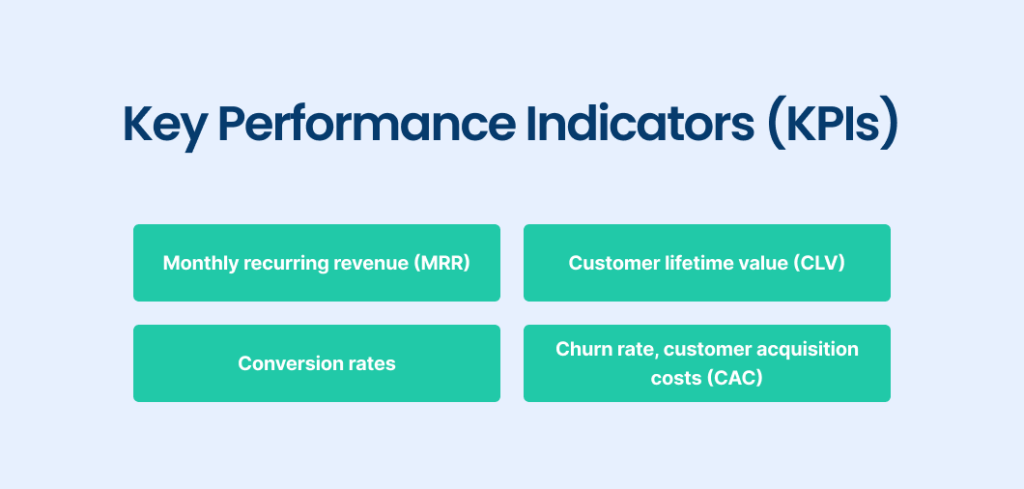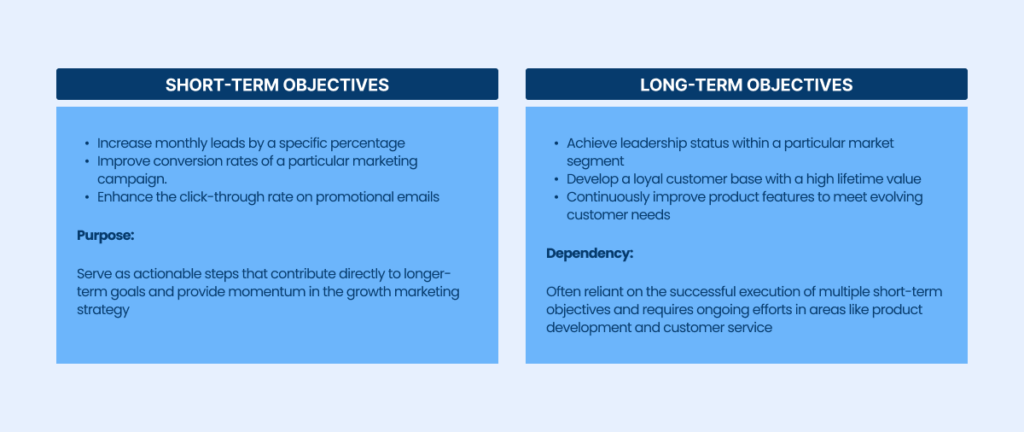Growth marketing transforms traditional marketing paradigms by integrating data-driven strategies and innovative tactics to fuel sustainable business expansion.
Imagine customers raving about you, not because they were bombarded with ads, but because they discovered your awesomeness organically.
Growth Marketing is the key to unlocking sustainable growth.
Moreover, a Growth Marketing Agency can contribute to the process.
Source: Demandsage
An effective growth marketing framework enables businesses to experiment, refine strategies, and expand their reach in a sustainable way.
The blog post will explain the importance of Growth Marketing, its strategies, and the development structure within the Marketing framework.
What is Growth Marketing?
Growth marketing is an innovative approach that goes beyond traditional marketing by focusing on the entire funnel—from acquiring users to engaging and retaining them over the long term.
Unlike conventional methods, which emphasize brand awareness and customer acquisition, growth marketing integrates data analysis, experimentation, and hyper-targeted communication strategies to optimize all customer interactions.
This method utilizes a variety of channels and tools, constantly testing and iterating on strategies to drive sustainable growth.
Growth marketing is particularly prevalent in sectors like SAAS growth marketing and B2B growth marketing, emphasizing continuous customer engagement and maximizing each customer’s lifetime value.
Key Differences Between Growth Marketing and Traditional Marketing
Growth marketing differs significantly from traditional marketing in several key areas:
- Focus on the Full Funnel: Traditional marketing often prioritizes customer acquisition at the top of the funnel. In contrast, growth marketing focuses on the entire customer lifecycle, aiming not only to attract but also to activate, retain, and ultimately turn customers into advocates.
- Data-Driven Decision Making: Growth marketers rely heavily on data to drive decisions, using analytics to test hypotheses and measure success across various customer journey stages. Traditional marketing may use data, but it is secondary to creativity and brand messaging.
- Speed and Adaptability: In growth marketing, speed and adaptability are crucial. Marketers must quickly respond to data and market changes, iterating campaigns and strategies in real-time.
Traditional marketing often follows a more static, campaign-based approach with longer planning and execution cycles. - Integration of Technology: Growth marketing extensively uses technology to automate processes, personalize interactions, and track performance metrics.
This technological integration enables more precise targeting and efficiency, which is essential for scaling efforts in dynamic markets like those for SaaS products.
Establishing Growth Marketing Objectives
Successful growth marketing frameworks begin with clearly established objectives that align with overall business goals. These objectives should reflect a desire for growth and specify the areas within the marketing funnel where resources should be concentrated.
Whether focusing on increasing user engagement, improving conversion rates, or reducing churn, the objectives must be quantifiable, achievable, and integral to the business’s success.
Aligning Marketing Objectives with Business Strategy
A crucial step in crafting a growth marketing plan is ensuring the marketing objectives align with the broader business strategy.
This alignment guarantees that marketing efforts contribute directly to the company’s goals, whether market expansion, revenue growth, or enhancing product offerings.
In contexts like SaaS or B2B, where customer relationships and recurring revenue are key, marketing objectives might include increasing subscription renewals or enhancing customer lifetime value. By aligning these objectives with business strategies, companies ensure that each marketing initiative moves the company closer to its overarching ambitions.
Setting Short-term vs. Long-term Objectives
Distinguishing between short-term and long-term objectives is vital in a growth marketing framework.
Understanding Your Audience
In growth marketing, understanding your audience is not just about knowing who your customers are; it’s about deeply understanding their behaviors, needs, and motivations to craft strategies that reverberate and drive engagement.
This comprehension forms the bedrock of any successful growth marketing framework. It allows businesses to target their marketing efforts more effectively and efficiently, thus maximizing the impact of every dollar spent.
For SaaS companies and other businesses, developing a precise audience understanding is particularly critical due to the highly competitive nature of these markets and the specific needs of digital-first customers.
Customer Segmentation
Customer segmentation is a fundamental aspect of a robust marketing framework. It includes dividing your customer base into groups based on shared characteristics such as demographics, purchasing behaviors, preferences, and psychographics. This segmentation enables marketers to tailor their strategies to each distinct group, enhancing the relevance and effectiveness of their campaigns.
Source: Dataaxleusa
For instance, a SaaS growth marketing framework might segment customers based on their business size, industry, or usage patterns, allowing for more tailored messaging and product offerings that meet each segment’s needs.
Effective customer segmentation helps companies in multiple ways:
- Increases Efficiency: By targeting specific groups, companies can divide their resources more efficiently, focusing their efforts where they are most likely to yield results.
- Enhances Customer Experience: Personalized marketing enhances the customer experience, which can lead to higher satisfaction and loyalty.
- Improves Product Development: Understanding the different needs and feedback from various segments can guide product development and feature prioritization.
Segmentation is not static; it should evolve as you gather more customer data and your market changes. This dynamic method ensures that your marketing efforts remain relevant and effective over time.
Creating Buyer Personas
Creating buyer personas is a natural extension of customer segmentation. Personas are detailed, semi-fictional characters representing each segment’s ideal customers.
Source: HubSpot
These personas are crafted through market research, existing customer data, and, often, educated assumptions. The goal is to personify the average member of each segment, providing a clearer picture of their day-to-day challenges, decision-making processes, and how they might interact with your product or service.
For growth marketing strategies, buyer personas provide several benefits:
- Strategic Alignment: They help ensure that all marketing activities—from product design to content creation—align with your target audience’s needs.
- Message Precision: They allow for crafting highly targeted messages that speak directly to each persona’s needs, pain points, and aspirations.
- Enhanced Predictability: By understanding the typical behavior patterns of each persona, marketers can better predict how changes to the marketing strategy or product offerings will resonate with their audience.
Personas should be living tools, updated regularly to reflect new learning and market conditions. This continuous refinement helps maintain the accuracy and relevance of your marketing efforts.
Tools and Techniques for Audience Analysis
To effectively segment customers and create accurate buyer personas, marketers rely on a variety of tools and techniques:
- Analytics Platforms: Tools like Google Analytics provide deep insights into how users deal with your website and products, offering valuable data for segmentation.
- CRM Software: Customer relationship management (CRM) systems can track customer interactions, purchases, and feedback, offering a rich data source for creating detailed customer profiles and personas.
- Surveys and Customer Feedback: Direct feedback from customers can suggest qualitative insights that are not always apparent from behavioral data alone.
- Market Research Tools: Platforms such as Nielsen and Statista offer industry data and trends to help us understand the broader market forces affecting customer behaviors.
- A/B Testing: This technique tests the effectiveness of specific marketing tactics and provides insights into the preferences and behaviors of various customer segments.
Implementing these tools and techniques within your growth marketing framework ensures a thorough audience understanding, which is critical to crafting effective growth marketing examples and strategies.
By continuously collecting and analyzing data, you can refine your understanding of your audience, adapt your strategies, and ensure that your growth marketing efforts are as effective and efficient as possible.
This deep, data-driven understanding of the customer drives better marketing outcomes and enhances the business’s overall strategic agility.
Leveraging Data and Analytics
In the digitally driven landscape of modern marketing, leveraging data and analytics is a cornerstone of building a successful growth marketing framework. This emphasis on data transcends the traditional marketing approach, shifting the focus from broad, undefined campaign metrics to precise, actionable insights.
Source: Fortunebusinessinsights
Particularly for SaaS companies, where user interactions can be intricately tracked and analyzed, the intelligent use of data and analytics is not just an advantage—it’s a necessity.
By systematically analyzing every stage of the funnel, growth marketers can identify bottlenecks, uncover opportunities, and fine-tune strategies to accelerate growth and enhance the customer journey.
Key Performance Indicators (KPIs)
Selecting Key Performance Indicators (KPIs) is critical in steering growth marketing strategies toward tangible outcomes. KPIs allow businesses to measure success against their objectives, providing a clear view of performance across various marketing funnel stages.

These indicators help marketers understand where they are generating value and where they need to optimize, making KPIs indispensable for any growth marketing framework.
Choosing the right KPIs requires a deep comprehension of your business goals and the customer journey.

These characteristics ensure that KPIs serve their purpose of guiding and measuring the effectiveness of growth marketing strategies rather than just tracking metrics without actionable outcomes.
Tools for Tracking and Analysis
Marketers rely on sophisticated tracking and analysis tools to measure these KPIs and effectively implement data-driven strategies.
These tools are essential for collecting data, deriving insights, and providing the actionable intelligence needed to execute a successful growth marketing approach.
Web Analytics
Web analytics tools like Google Analytics are foundational in any marketing framework for SaaS or digital-focused businesses. They suggest essential insights into how users interact with your website and product. Web analytics can track everything from basic metrics such as page views and bounce rates to more complex funnel analyses and user paths.
For growth marketers, analyzing user behavior at a granular level allows for optimizing each funnel stage—from initial awareness and acquisition through engagement and retention.
Features of web analytics tools include:
- Traffic Analysis: Understanding web traffic sources helps refine acquisition strategies.
- Conversion Tracking: Identifying which activities lead to conversions, allowing marketers to focus on the most effective tactics.
- User Flow Data: Visualizing the paths users take through a site can highlight potential friction points in the user journey.
Customer Relationship Management (CRM) Systems
CRM systems are another critical tool in a growth marketer’s arsenal. These systems manage all aspects of a company’s interactions with current and potential customers.
By integrating data from various touchpoints, CRM systems provide a comprehensive view of the customer journey, aiding in personalized marketing efforts and strategic customer management.
Key benefits of CRM systems include:
- Centralized Data: Aggregating customer data in one place to provide a unified view of customer interactions across sales, marketing, and customer service.
- Segmentation Capabilities: Allowing for detailed segments based on user behaviors, purchase history, and other criteria, which can then be targeted with customized campaigns.
- Automation Features: Automating routine tasks such as email marketing or lead scoring increases efficiency and ensures timely follow-ups.
By leveraging CRM and web analytics tools, growth marketers can track essential KPIs and gain deep insights into customer behaviors and preferences.
This data-driven approach differentiates growth marketing from traditional marketing. It offers a level of precision and adaptability that significantly enhances the ability to not only meet but exceed growth objectives.
This strategic use of data and analytics forms the backbone of any modern marketing framework, especially in high-velocity environments like SaaS, where rapid iteration and continuous optimization are crucial for success.
Execution of Growth Tactics
Executing growth tactics within a growth marketing framework is both an art and a science. It blends creative marketing strategies with rigorous data analysis and continuous optimization.
This dynamic process is essential for businesses looking to deep in the competitive digital landscape, where traditional marketing approaches fall short.
Source: Fortunebusinessinsights
Growth marketing distinguishes itself by emphasizing rapid experimentation, data-driven decision-making, and agility, which are crucial for adapting to fast-changing market conditions and customer preferences.
A/B Testing and Experimentation
A/B testing and experimentation are at the core of the growth marketing process, enabling marketers to test hypotheses and revise strategies based on empirical data iteratively. This approach allows businesses to minimize risks associated with new initiatives by testing them on a smaller scale before full deployment.
Source: Blog Analytics
For example, a growth team might run two versions of an email campaign to see which one yields higher open rates or conversion rates. The insights gained from these experiments guide further marketing efforts, ensuring that the most effective elements are implemented.
Key aspects of A/B testing include:
- Controlled Experimentation: By comparing a control group to a variation, marketers can directly attribute changes in customer behavior to specific modifications.
- Iterative Process: Continual testing and refinement help create a growth marketing framework that evolves with the business and market conditions, fostering sustainable business growth.
- Precision in Execution: Detailed tracking and analysis of experiments allow businesses to understand exactly what works and why, an advantage not typically afforded by traditional marketing strategies.
Campaign Management and Optimization
Effective campaign management and optimization are vital for turning strategic plans into successful actions.
This stage involves the careful planning, execution, and monitoring of marketing campaigns to ensure they meet predefined objectives and contribute to the overall growth strategy. Optimization efforts focus on enhancing campaign elements that drive performance, such as targeting, messaging, and channel selection.
Source: Statista
The goal is to maximize ROI and guarantee that each campaign contributes positively to the business’s growth trajectory.
In growth marketing vs traditional marketing, the former focuses on agile responses and continuous improvements based on real-time data. This dynamic approach is particularly effective in today’s digital marketing environment, where consumer behaviors and market trends can shift rapidly.
Agile Methodologies in Marketing
Integrating agile methodologies into marketing practices is a key differentiator in a successful growth marketing framework. Originally derived from software development, agile marketing emphasizes flexibility, speed, and iterative learning, all geared toward enhancing marketing effectiveness and efficiency.

By adopting agile practices, marketing teams can respond quickly to changes, test new ideas, and refine strategies based on immediate feedback.
Components of agile marketing include:
- Sprints: Short, focused cycles of work that allow teams to tackle specific tasks and review results quickly.
- Scrum Meetings: Regular check-ins that help keep the team aligned and focused on the most important tasks.
- Adaptability: The ability to shift strategies or tactics quickly based on the latest data or market feedback.
Applying agile methodologies in marketing enables teams to be more experimental and less afraid of failure. This environment is conducive to innovation and allows growth marketers to explore new avenues for engagement and conversion that may not be possible in a more rigid marketing structure.
Executing growth tactics within a growth marketing framework demands a sophisticated blend of strategic planning, creative experimentation, and meticulous optimization.
Growth marketers can drive significant improvements in business performance by employing A/B testing to refine tactics, managing campaigns rigorously, and incorporating agile methodologies.
This approach supports short-term wins and lays the foundation for long-term, sustainable business growth, making it an indispensable strategy in modern businesses’ toolkits for outpacing their competition and delighting their customers.
Partner with [A] Growth Marketing Agency for Your Growth Marketing
Growth Marketing isn’t a one-time trick. It’s a growth mindset about continuous learning, experimentation, and refinement.
[A] Growth Marketing Agency can be your advocate in the process. Our approach to continuous testing and optimization means your strategies are always evolving. Indeed, this agility is crucial for adapting to market changes and customer feedback. We focus on measurable results, which means you can see a clear line from marketing efforts to revenue increases.
With us, you tap into a wealth of knowledge, tools, and techniques essential for successful growth marketing today.
Don’t think long!

